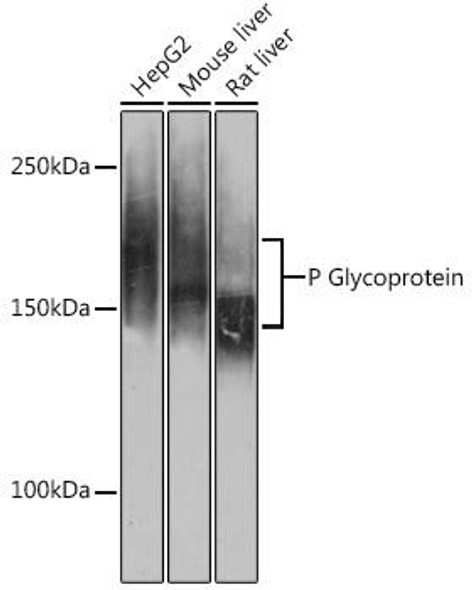Description
| Antibody Name: | P Antibody (PACO34294) |
| Antibody SKU: | PACO34294 |
| Size: | 50ug |
| Host Species: | Rabbit |
| Tested Applications: | ELISA |
| Recommended Dilutions: | |
| Species Reactivity: | Hepatitis B virus genotype A2 subtype adw2 |
| Immunogen: | Recombinant Hepatitis B virus genotype A2 subtype adw2 Protein P protein (349-692AA) |
| Form: | Liquid |
| Storage Buffer: | Preservative: 0.03% Proclin 300 Constituents: 50% Glycerol, 0.01M PBS, PH 7.4 |
| Purification Method: | >95%, Protein G purified |
| Clonality: | Polyclonal |
| Isotype: | IgG |
| Conjugate: | Non-conjugated |
| Background: | Multifunctional enzyme that converts the viral RNA genome into dsDNA in viral cytoplasmic capsids. This enzyme displays a DNA polymerase activity that can copy either DNA or RNA templates, and a ribonuclease H (RNase H) activity that cleaves the RNA strand of RNA-DNA heteroduplexes in a partially processive 3'- to 5'-endonucleasic mode. Neo-synthesized pregenomic RNA (pgRNA) are encapsidated together with the P protein, and reverse-transcribed inside the nucleocapsid. Initiation of reverse-transcription occurs first by binding the epsilon loop on the pgRNA genome, and is initiated by protein priming, thereby the 5'-end of (-)DNA is covalently linked to P protein. Partial (+)DNA is synthesized from the (-)DNA template and generates the relaxed circular DNA (RC-DNA) genome. After budding and infection, the RC-DNA migrates in the nucleus, and is converted into a plasmid-like covalently closed circular DNA (cccDNA). The activity of P protein does not seem to be necessary for cccDNA generation, and is presumably released from (+)DNA by host nuclear DNA repair machinery. |
| Synonyms: | Protein P [Includes: DNA-directed DNA polymerase (EC 2.7.7.7); RNA-directed DNA polymerase (EC 2.7.7.49); Ribonuclease H (EC 3.1.26.4)], P |
| UniProt Protein Function: | Multifunctional enzyme that converts the viral RNA genome into dsDNA in viral cytoplasmic capsids. This enzyme displays a DNA polymerase activity that can copy either DNA or RNA templates, and a ribonuclease H (RNase H) activity that cleaves the RNA strand of RNA-DNA heteroduplexes in a partially processive 3'- to 5'-endonucleasic mode. Neo-synthesized pregenomic RNA (pgRNA) are encapsidated together with the P protein, and reverse-transcribed inside the nucleocapsid. Initiation of reverse-transcription occurs first by binding the epsilon loop on the pgRNA genome, and is initiated by protein priming, thereby the 5'-end of (-)DNA is covalently linked to P protein. Partial (+)DNA is synthesized from the (-)DNA template and generates the relaxed circular DNA (RC-DNA) genome. After budding and infection, the RC-DNA migrates in the nucleus, and is converted into a plasmid-like covalently closed circular DNA (cccDNA). The activity of P protein does not seem to be necessary for cccDNA generation, and is presumably released from (+)DNA by host nuclear DNA repair machinery (). |
| UniProt Protein Details: | |
| NCBI Summary: | |
| UniProt Code: | P17100 |
| NCBI GenInfo Identifier: | 118868 |
| NCBI Gene ID: | |
| NCBI Accession: | P17100.1 |
| UniProt Secondary Accession: | P17100 |
| UniProt Related Accession: | P17100 |
| Molecular Weight: | 94,768 Da |
| NCBI Full Name: | Protein P |
| NCBI Synonym Full Names: | |
| NCBI Official Symbol: | |
| NCBI Official Synonym Symbols: | |
| NCBI Protein Information: | |
| UniProt Protein Name: | Protein P |
| UniProt Synonym Protein Names: | |
| Protein Family: | P29 |
| UniProt Gene Name: | P |
| UniProt Entry Name: | DPOL_HBVA4 |






